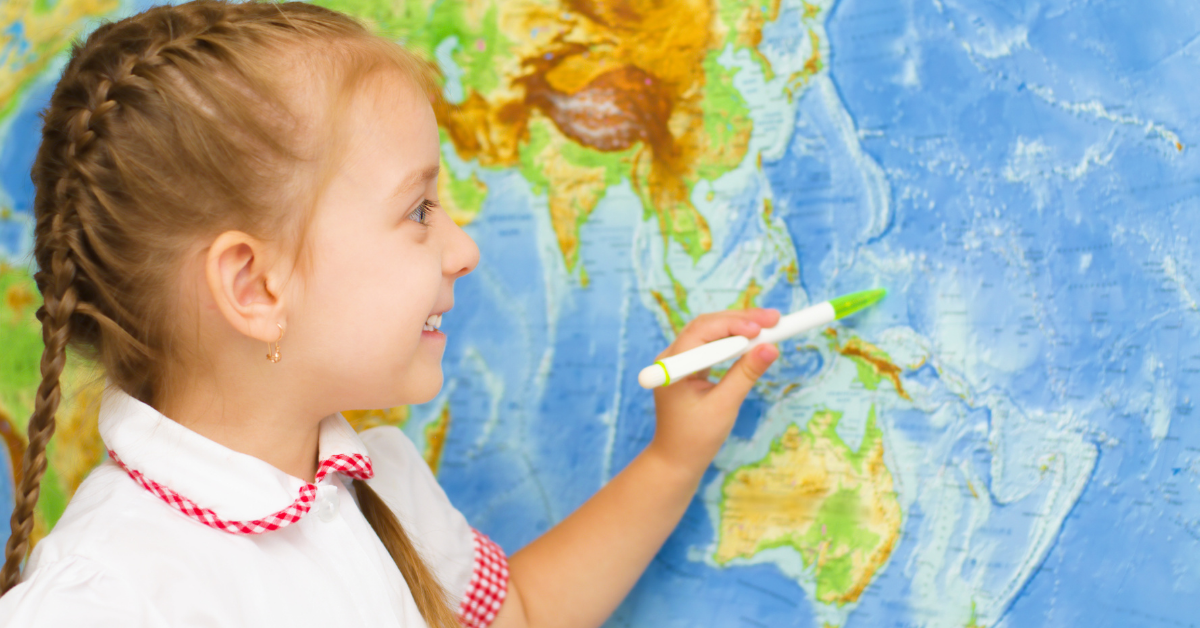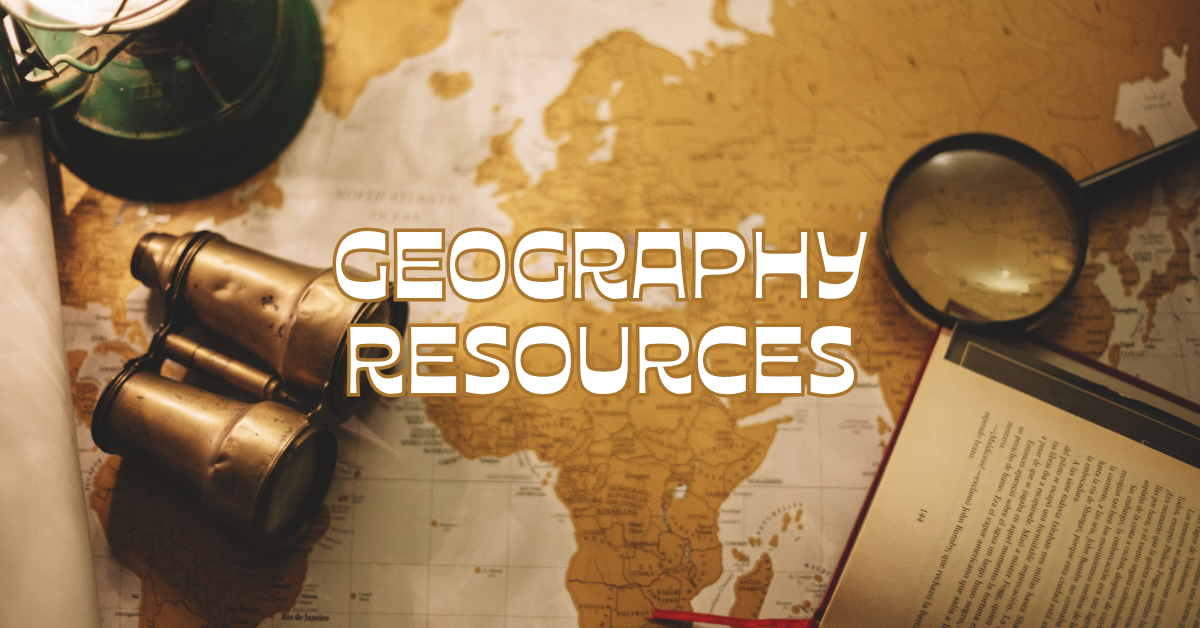Homeschooling offers the flexibility to customize your child’s education, and geography is one subject where creative and interactive resources can make a huge difference. From hands-on tools to digital platforms, there’s no shortage of ways to bring geography to life in your homeschool.
Here are the top homeschool geography resources, including effective tools and the best maps to enhance your geography curriculum.
Essential Geography Tools For Homeschooling
To create an engaging and comprehensive geography experience, it’s helpful to have a mixture of physical materials and digital resources. Here are some of the best tools for enhancing your homeschool geography lessons:
- Globes
A globe is an essential geographic tool for every homeschool. It provides a three-dimensional perspective of the world and helps students understand global scales, distances, and relationships between continents and oceans. Look for interactive globes like the LeapFrog Magic Adventures Globe, which includes touch technology and multimedia lessons.
- Atlases
Atlases are perfect for exploring detailed maps of different continents, countries, and cities. Kid-friendly atlases, such as National Geographic Kids Beginner’s World Atlas, are colorful and full of engaging facts that make geography exciting for younger learners.
- Mapping Kits
Mapping kits allow kids to learn by doing, which is key to retaining information. Products like Rand McNally Schoolhouse Intermediate Map Kit come with blank maps, activity ideas, and dry-erase markers for a hands-on experience.
- Digital Geography Software
Apps and online tools are great for immersive geography learning. Try Google Earth for exploring the world in 3D, or use education-focused apps like Stack the States for interactive map-based games. Digital platforms like Seterra include map quizzes to test your child’s knowledge of countries, capitals, and more.
- Compass and Navigation Tools
A compass teaches the fundamentals of cardinal directions and navigation. Pair it with outdoor activities like orienteering to reinforce geography skills while engaging in physical activity.
- Puzzle Maps
Puzzle maps are educational and fun, helping younger children develop spatial awareness and learn about state and country locations. Montessori Puzzle Maps are particularly effective because they separate countries and continents into unique pieces.

Interactive Learning Through Geography Activities
Homeschooling allows you to think outside the box, and geography offers countless opportunities for interactive and memorable activities. Here are a few ideas that combine fun and learning:
- Country Studies
Choose a country each month for an in-depth study. Include research on its history, culture, landmarks, and natural features. You can incorporate cooking (to make a traditional dish), music, or crafting national symbols to create a full sensory experience.
- Map-Making Projects
Encourage children to create their own maps, whether it’s of their home, neighborhood, or an imaginary land. This helps them grasp concepts like scale, legends, and map coordinates.
- World Landmark Detective Game
Use pictures or virtual tools to showcase famous world landmarks. Have your kids figure out their location on the globe or a map. For instance, can they point to the Eiffel Tower’s location on a world map?
- Travel Geography Journal
Create a “travel journal” based on countries or regions your family wants to explore. Include drawings, descriptive entries, or printed images from the internet.
- Geography-Themed Board Games
Games like Ticket to Ride or Where in the World? teach strategy while helping kids learn geography facts.
The Best Maps For Homeschoolers
Maps are the foundation of geography education in any learning environment. They cultivate spatial thinking and provide a broader understanding of the world. While many digital resources exist, there’s something particularly engaging about physical maps that allows learners to interact with geography in a tactile way.
Wall maps are a must-have. Consider a world map with laminated surfaces, so your children can mark locations with non-permanent markers during lessons. Some maps, such as the Rand McNally World Wall Map for Kids, incorporate vivid colors and visuals to keep learning fun and dynamic. You may also find value in topographic maps, which teach children about elevation and physical landforms.
For a more focused study of countries, regional or continent-specific maps are ideal. For example, detailed maps of the United States showcase state boundaries, capitals, and major landmarks. Brands like National Geographic produce high-quality maps that are educational and visually appealing. Don’t overlook interactive magnetic maps, which are particularly effective for younger learners to identify states, countries, and continents in a hands-on way.
Maps with QR codes or augmented reality features can merge physical and digital learning, providing a modern layer of exploration. These maps often link to videos or additional geographic content to enhance the educational experience.
Practical Tips For Teaching Geography At Home
Homeschooling parents face challenges in maintaining structure, but these practical tips will set you off on the right path when teaching geography:
- Start with Your Child’s Interests
Every child learns differently, so tailoring lessons to their interests can keep them engaged. For example, if they’re fascinated by animals, design a lesson around where various species live across the globe.
- Establish a Routine for Geography Lessons
Setting aside specific times each week for geography will ensure consistency. Having a designated “Map Monday” or “World Friday” builds anticipation for the subject.
- Combine Subjects for Deeper Learning
Geography pairs naturally with subjects like history, science, and even math. When studying ancient civilizations, include their geographic contexts. When teaching ecosystems, overlay a map showing their global locations.
- Utilize Real-World Events
The news provides plenty of opportunities to connect geography to current events. For instance, learning about the locations of international teams during the Olympics reinforces map skills while connecting to real-world contexts.
- Focus on Problem-Solving
Present your child with questions that require critical thinking, such as “Why do you think this desert is located here?” or “What might happen to this coastline if sea levels rise?”
- Resource Sharing with Local Groups
Many homeschooling communities share physical and digital resources, allowing you to explore new tools without the upfront expense. Look for geography kits, maps, or globes available through loan programs.
- Plan Virtual Field Trips
Online virtual tours of museums, national parks, and historical locations can offer plenty of learning opportunities from the comfort of your home.
Building Long-Term Geography Skills
When teaching geography, it’s easy to focus on memorizing capitals and country locations, but true geographic understanding goes beyond rote learning. Building long-term skills sets the foundation for critical thinking about our interconnected world. Encourage your children to develop spatial reasoning by practicing mental mapping. This can start small, like sketching their schoolroom or neighborhood and identifying its main features. Over time, expand these activities to tracing larger areas on blank maps without looking at a reference.
Fostering interest in cultural geography is also vital. Learning about human-environment interactions, such as how people in different parts of the world adapt to weather, natural resources, or transportation challenges, helps kids make connections between geography and everyday life. This can be expanded into lessons about sustainability, global trade, or migration patterns. Finally, geographic literacy isn’t just about maps—it’s about understanding the “why” behind geographic patterns. Encourage your kids to ask questions like, “Why are mountains often found along tectonic plate boundaries?” or “What makes river valleys fertile?” These deeper inquiries ensure that geography becomes a subject they’re curious about for years to come.
By carefully selecting resources and taking advantage of hands-on learning opportunities, geography lessons in your homeschool can go far beyond textbooks, providing your child with valuable skills and a greater understanding of the world around them.





